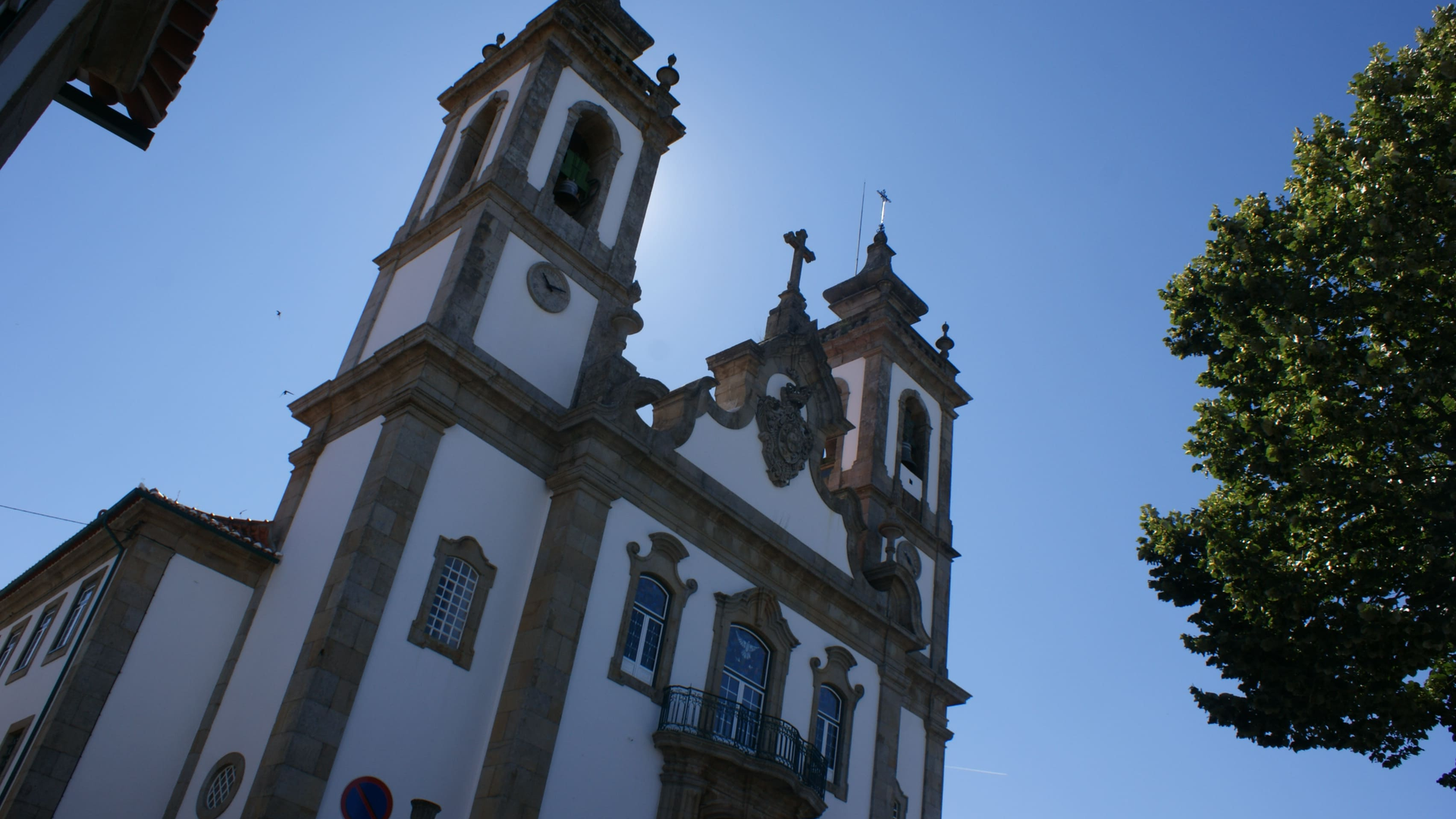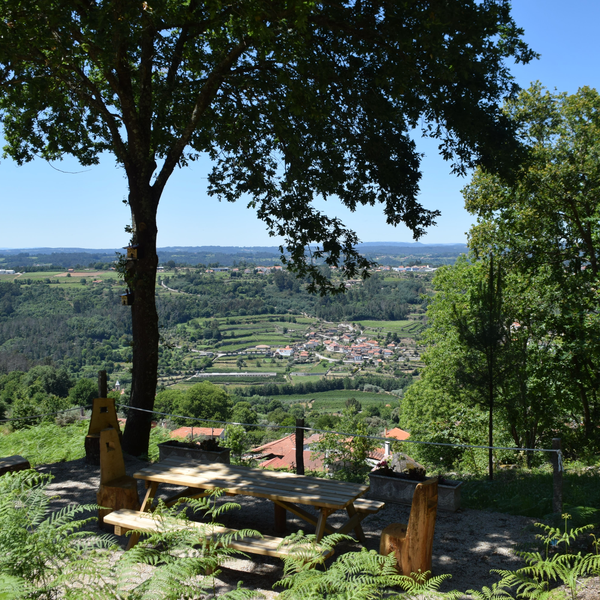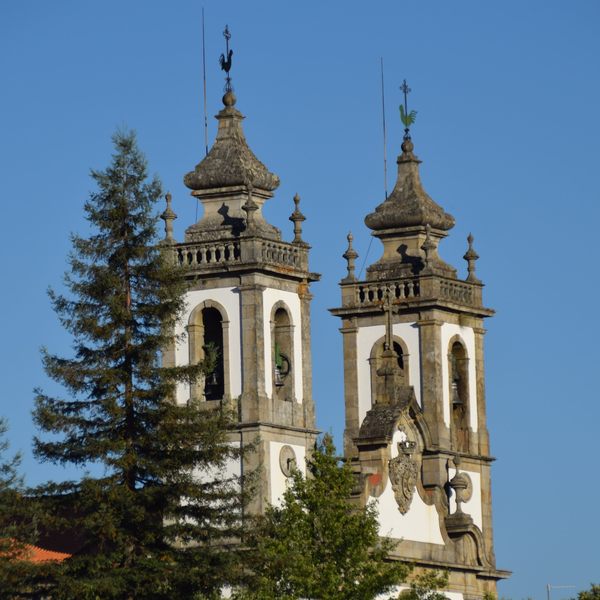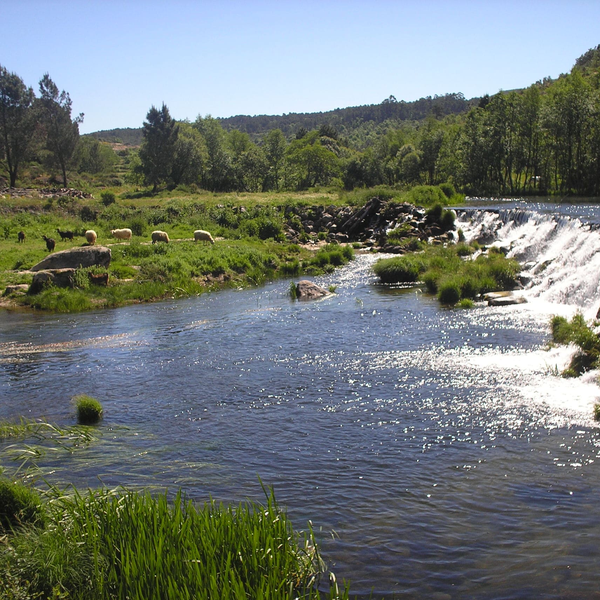
PENALVA DO CASTELO
A reunion with nature at its purest.
Penalva do Castelo is a unique mosaic of nature! The landscape, coloured sometimes by flowering fields and vineyards, sometimes by verdant orchards wrapped in the soft blanket of the forest that stretches along the slopes and ridges.
The municipality's tourism potential and attractions are diverse and undeniable, starting with its heritage legacy, which bears witness to the various historical periods. Of particular note from the Neolithic period is the Anta do Penedo do Com (3000 BC), in Esmolfe. The diversity of its vast architectural and cultural heritage includes Casa da Ínsua, or Solar dos Albuquerque, in Baroque style (18th century), one of the most beautiful and interesting manor houses in Beira Alta, and the Igreja da Misericórdia, a beautiful example of sacred art (Baroque/Neoclassical).
The Monastery of Santo Sepulcro is extremely important from a historical point of view, having been the first house of this religious order to be built on the Iberian Peninsula in the 12th century, which is why we can call Penalva do Castelo the ‘cradle’ of this religious order.
The rivers Dão, Côja, Ludares and Carapito stand out for their biodiversity and their crystal-clear waters provide a relaxing environment and pure contact with nature.
The municipality's endogenous products are also a reference for quality and prestige: Serra da Estela PDO cheese, Dão de Penalva wine, Bravo de Esmolfe apples, olive oil, honey and sweets, Castendo bean pastry and D. Bravo cake (which contains the queen of apples - Bravo de Esmolfe - as its main ingredient).
The municipality's Network of Cultural Routes, which includes seven walking routes (Senhora da Ribeira Route, Galegos Route / Santiago Route, Past Scenarios Route, Rural Environments Route, Ryal Trail, Mills Route and Castendo Trail) and two road routes (‘Places of Memory: Circuit 1 and Circuit2’), has attracted more and more visitors and tourists.
The excellence of these products combined with the seductive beauty of the natural nooks and magnificent landscapes honed by successive generations of hard-working Penalvenses are just some of the reasons to visit the municipality.




House of Ínsua
AccommodationThe House of Ínsua, also known as Solar dos Albuquerques, is one of the most interesting manor houses in Beira Alta. It was built in the second half of the 18th century (around 1780) by Luís de Albuquerque de Mello Pereira e Cáceres (1739-1797), a nobleman of the Royal House and later Governor and Captain-General of the State of Mato Grosso in Brazil. It is a manor house in the Baroque style, with its imposing façade and magnificent gardens, lined with small fountains and lakes, as its hallmarks. Even today, the family's symbol - the fleur-de-lis - can still be seen throughout the estate. Casa da Ínsua was a pioneer in terms of electricity and is a reflection of true agricultural industrialisation - it has wine presses, a wine cellar, a mini-hydroelectric plant, an ice factory (which is no longer in use), a locksmith's shop, among others, all of which can be visited by appointment. This magnificent palace opened to the public as a boutique hotel in 2009. It is currently part of the prestigious Spanish hotel chain PARADORES and is the first PARADOR unit outside Spain.

Monastery of the Holy Sepulchre
HeritageThe Monastery of the Holy Sepulchre, classified as a Monument of Public Interest (2013), is located overlooking the River Dão, in the parish of Trancozelos.
The establishment of the Order of the Holy Sepulchre on this site allowed for the reorganisation and recovery of the Beira territory, contributing a vast influence in the social, cultural and economic fields. The foundation of the cenobium dates back to the 12th century and the beginning of Portuguese nationality. It was related to the establishment of the Order of the Holy Sepulchre in Portugal, through the intermediary of Teresa, wife of Count Henry, who decided to set up a monastery of the Knights of the Holy Sepulchre in the lands of Penalva do Castelo, more precisely in the old Vila Nova do Santo Sepulcro (Trancozelos) - the first house of this religious Order built on the Iberian Peninsula.
More information

Castle Bridge
HeritageThis bridge is located in the parish of Castelo de Penalva. Commonly known as the ‘Roman bridge’, it is located in a pleasant spot over the river Dão and is made up of a single round arch (Roman art). The ‘Roman’ road and the Castelo bridge are part of a Roman road and are a fine example of the passage of the Romans through the lands of Penalva do Castelo.
Crossing the bridge, on the right-hand side, there is a leisure park by the river, ideal for a picnic. Heading towards the village of Cantos, with the river Dão on your right, you can see a beautiful water dam known as ‘Açude dos cantos’ and the polders that once allowed people to cross the river.
More information

Açude dos Cantos
HeritageThe Açude dos Cantos, on the River Dão, is located in a quiet spot of great natural beauty and relaxing surroundings. The fauna and flora is rich and varied. Next to the pontoon on the site, you can see the polders over the River Dão that once allowed the river to cross to the other bank. This is one of the points of interest on the ‘PR4 Rota dos Ambientes Rurais’ (Route of Rural Environments) walking route, which starts next to the Igreja Matriz de S. Pedro in Castelo de Penalva, as well as on the ‘Lugares de memória: circuito 1’ (Places of Memory: circuit 1) road route, which starts at the Igreja da Misericórdia in Penalva do Castelo. The River Dão runs for 21 kilometres through the municipality of Penalva do Castelo and is characterised by its biodiversity, allowing for close contact with nature. Before continuing along the route, we suggest a short diversions, with the River Dão on your left, to visit the Ponte do Castelo and the Açude do Vais.
More information

Our Lady of Lurdes Forest
HeritageThis pleasant and relaxing natural space, owned by the House of Ínsua, is classified as a Property of Municipal Interest. At the base of the hill, next to the river Côja, the forest begins, with specimens of pine, oak, eucalyptus and some cedars. Right at the start of the trail is an artificial cave, carved into the rock (a replica of Lourdes in France), with an image of Our Lady of Lourdes and an inscription carved into the rock - alluding to the Virgin's apparition in Lourdes to Bernardette... ‘Come and may the people accompany you 18 Feb 1858’. At the top, accessed by a narrow path, is the Chapel of the Immaculate Conception, built in 1909 by Manuel de Albuquerque of the House of Ínsua, with tiles depicting the apparitions of Lourdes, the fleur-de-lis insignia, his monogram and an inscription alluding to the construction of the chapel in thanks for the recovery of his mother, the victim of a serious accident in Paris on 16 June 1907.
More information

Misericórdia Church and Museum Centre
HeritageLocated in Largo Magalhães Coutinho, this imposing building (Baroque/Neoclassical) is the town's most recognisable visual feature. It consists of a high altar and two collateral altars. The magnificent pipe organ from 1810 stands out inside. The entrance is through the side doors.
The Museum Centre is located on the second floor of the Misericórdia Church. It is an exhibition space for the Holy House's collection, which recalls the memorable past of nearly four centuries of mission/intervention in the community and preserves unique pieces of sacred art that deserve to be admired and recognised by society. Guided tours for groups must be booked at least three days in advance.
More information

Lages of Sangemil
HeritageThe Lages de Sangemil are located in the town of Sangemil and offer one of the most beautiful views in the municipality. From here you can see part of the parish of Trancozelos and extensive vineyards. As the name suggests, these are large granite slabs - where grain was once dried. In the surrounding area there are the old ‘palheiras’, which were used for centuries by farmers to dry and store the grain grown in the fertile lands of the Dão.
It should be emphasised that Sangemil is known as the ‘Land of Bakers’ - in this village, several generations have dedicated themselves to the artisanal process of making bread - a tradition that is still maintained through the village's community oven - where it is possible to watch and taste the artisanal production of the famous bread. The old haystacks were recently rehabilitated and renovated into a Rural Village Tourism Centre - this is how the Eiras do Dão development came to be. There are 8 houses, a reception and a communal lounge area built in granite and duly equipped for the comfort and safety of its guests, in accordance with DGS standards.
More information

Dolmen of Penedo do Com
HeritageThe Dolmen of Penedo do Com is located in the parish of Esmolfe, in a pleasant and relaxing spot. It is a magnificent example of Megalithic art that bears witness to the heritage of our ancestors.
It is a prehistoric tomb (collective funerary monument) around 6,000 years old, classified as a Property of Public Interest since 1992. It consists of a chamber covered by a large slab, weighing around eight tonnes, which was accessed via a corridor also covered by horizontally arranged slabs. Archaeological excavations of the monument revealed that its use dates back to the 4th millennium BC, having been reused in the Chalcolithic period, around 3000 BC (Late Neolithic).
Due to its great scientific importance and heritage dimension, the Anta do Penedo do Com is one of the ex-libris of Penalva do Castelo's archaeological heritage, as well as one of the grandest megalithic monuments in the region and even in Portugal.
More information

Trancozelos Medieval Bridge
HeritageThis bridge, located over the River Dão, used to serve an ancient slabbed road that gave access to the Monastery of the Holy Sepulchre. Built in local granite, it has two arches and an angular pavement. It was the crossing point that served the village of Trancozelos. In the 18th century, a beautiful little chapel with baroque features was built, which had a small hole (safe) in which alms were deposited to have masses said for the souls.
More information

Rossio Swing
HeritageThe Rossio Swing is located in the parish of Trancozelos and offers magnificent views. From here you can see the villages of Trancozelos, Trancozelinhos, Marinha, Lizei, part of the town of Penalva do Castelo, Mangualde and part of the Serra do Caramulo mountain range.





